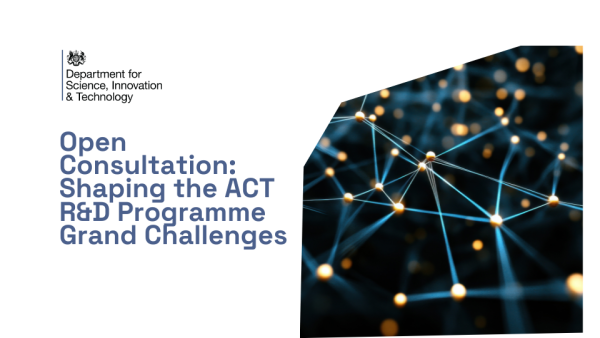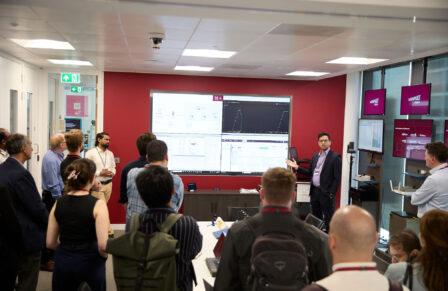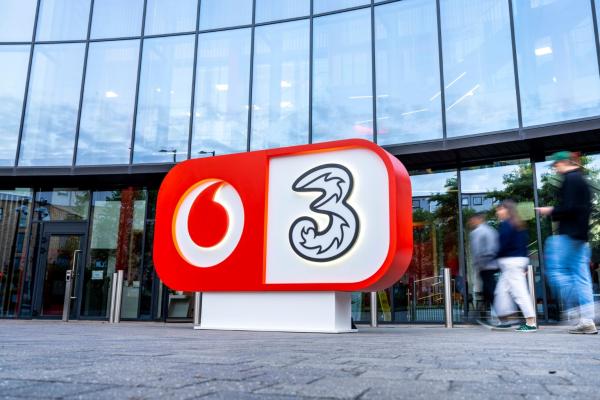
The project aimed to transform the C-PON architecture from TRL3 to TRL6, focusing on energy-efficient processing cells, intelligent processing steering, and the development of LLMs models.
- DSIT funding: £623,000
- Partner funding: £334,000
- Project dates: 01/01/2022 - 31/07/2024
- Locations: Leeds
- Project Partners: Kings College London, Ultracell Networks[H(1] [H(2]
C-PON stands for Cellular Passive Optical Network. It is a technology used for interconnecting servers in a modular and energy-efficient manner. The C-PON cell is the smallest modular unit that can be operated alone and is constructed by integrating various functional elements such as servers, racks, the Optical Line Manager (OLM), control software, the C-PON fabric, and the backplane. The ECORAN project aimed to transform the C-PON architecture from a lab-based demonstrator (TRL3) to a mature system validated in a relevant operational environment (TRL6) by implementing key functions in FPGA commercial grade accelerators, customizing the architecture for the ORAN environment, and introducing intelligence through reinforcement learning.
LLM models, or Large Language Models, are advanced machine learning models designed to understand and generate human language. In the context of the ECORAN project, LLMs were integrated into the Processing Steering system to enhance the system's ability to process and analyse complex data, contributing to improved network intelligence and operational efficiency. The project explored the potential of LLMs for clustering algorithms and developing high-demand use cases such as AR/VR applications. This included the development of use cases with commercial partners, cell clustering for processing steering using generative algorithms, and experimental demonstrations.
Project Achievements
- Energy-Efficient Processing Cells for ORAN:
- Development of energy-efficient processing cells, transforming the C-PON cell from TRL3 to TRL6.
- Customization of the C-PON card for processing steering use case.
- Development of the Optical Line Manager (OLM) for processing steering.
- Implementation of the C-PON cell testbed.
- Intelligent Processing Steering in ORAN:
- Implementation of reinforcement learning algorithms for processing steering.
- Selection and optimization of machine learning (ML) algorithms.
- Mapping ML algorithms to the ORAN framework.
- Demonstration:
- Development of a Graphical User Interface (GUI) for the modelling tool. This allows users to interact with electronic devices using graphical icons and visual indicators, as opposed to text-based interfaces, typed command labels, or text navigation. In the context of the ECORAN project, a GUI was developed to allow users to graphically interact with the modelling tool and try out various what-if scenarios
- Engagement with the ORAN community and commercial contacts.
- Experimental demonstration of the C-PON cell implementation and reinforcement learning (RL) algorithms. These were developed to optimize network processing by deciding when to join cells, which cells to join, and how to join them. These algorithms were used to enhance the efficiency and adaptability of the system to dynamic network conditions.
- Development of LLMs Model:
- Integration of LLMs into the Processing Steering system.
- Development of use cases with commercial partners.
- Experimental demonstration of the LLMs in the modelling tool.
Next steps
The project has developed the insights gained from the ECORAN project into its work on the DSIT funded Open Network Ecosystem project, ECO-TAP. The ECO-TAP project’s vision is to improve the energy efficiency of the networks that interconnect disaggregated servers in data centres by introducing a new Hybrid Cellular-Switched Topology.
To learn more about the work of the ECORAN project please read their final report here.









